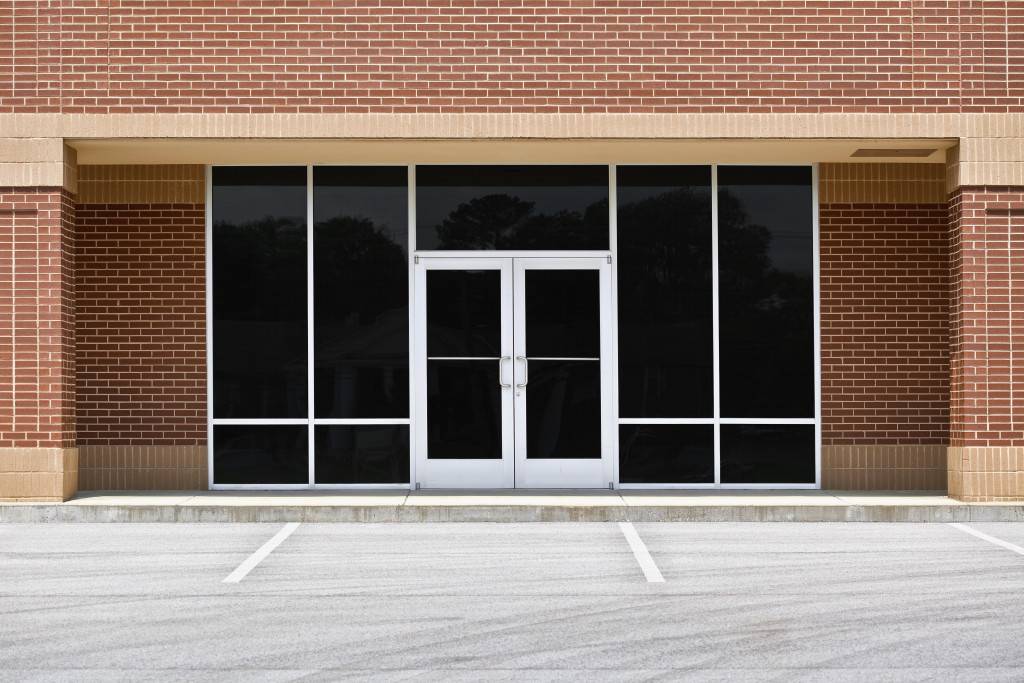- Utilize natural light to make your commercial space feel brighter and more welcoming.
- Invest in functional and flexible furniture to create a versatile workspace.
- Infuse your brand identity into the design to reflect your company’s culture.
- Emphasize openness and collaboration for a more productive environment.
- Regularly maintain and repair glass elements in your commercial space.
Interior design is crucial in creating an appealing and functional environment when revamping your commercial space. A well-designed space enhances the aesthetics, improves employee productivity, and leaves a lasting impression on visitors. This guide will explore five interior design tips to help you transform your commercial space into a stylish and inviting place.
1. Utilize Natural Light to its Fullest Potential
Natural light profoundly impacts the ambiance and mood of any space. Maximizing natural light can make your commercial space feel brighter, more spacious, and welcoming.
Here are some tips on how to utilize natural light to its fullest potential:
Understanding the Benefits of Natural Light
Natural light not only brightens up a space but also has numerous benefits for both physical and mental well-being. Exposure to natural light has been linked to improved mood, increased productivity, better sleep quality, and reduced eye strain. Using natural light in your commercial space can create a more positive and healthy environment for your employees and customers.
Strategic Placement of Windows

The placement of windows in a space plays a crucial role in maximizing natural light. When designing or renovating your commercial space, it is important to consider the direction of sunlight throughout the day and strategically place windows accordingly. South-facing windows provide ample sunlight during the day, east-facing windows bring in the morning sunlight, and west-facing windows offer warmer afternoon light.
Incorporating Reflective Materials
Reflective materials such as mirrors or glossy surfaces can help bounce natural light around the room, making it feel brighter and more spacious. This is especially useful in smaller spaces where natural light may be limited. Incorporating light-colored walls and furniture can also help reflect and amplify natural light.
Utilizing Lightwell Strategies
Lightwells are vertical shafts or windows installed in the roof or walls of a building to allow natural light to penetrate deeper into the space. This is particularly useful for commercial spaces with limited access to natural light, such as basements or interior rooms. By incorporating light wells, you can create a more evenly lit space and reduce the need for artificial lighting during the day.
2. Incorporate Functional and Flexible Furniture
Investing in functional and flexible furniture is essential for creating a versatile commercial space. Choose furniture that can serve multiple purposes, such as modular desks that can be rearranged to accommodate different work styles or meeting configurations.
Opt for ergonomic chairs that prioritize comfort and support for long periods of sitting. Additionally, consider incorporating mobile furniture like rolling storage units or movable partitions that can easily adapt to changing needs.
3. Infuse Your Brand Identity into the Design

Your commercial space should reflect your brand identity to create a cohesive and memorable experience for employees and visitors. Use your brand’s color palette to guide the selection of wall paint, furniture upholstery, and decorative accents.
Display your company logo prominently in reception areas or common spaces. Incorporate branded artwork or graphics that convey your company’s values and mission. By infusing your brand identity into the design, you create a unique and engaging environment that reinforces your company’s culture.
4. Emphasize Openness and Collaboration
Creating an environment that fosters teamwork and collaboration is essential for a productive commercial space. To achieve this, consider an open layout design that promotes employee interaction and communication. Use glass partitions or low-height dividers instead of solid walls to maintain a visual connection while providing some acoustic privacy.
Create dedicated collaborative spaces with comfortable seating, whiteboards, and technology for brainstorming sessions or informal meetings. By emphasizing openness and collaboration, you encourage employee creativity and teamwork.
5. Consider Glass Elements
Glass elements, such as windows and glass partitions, are becoming increasingly popular in modern commercial spaces. They offer a sleek and sophisticated look while also providing natural light and an open feel to the space. However, it is essential to regularly maintain and repair these glass elements to ensure their longevity and safety.
Investing in commercial glass repair services can help keep your glass elements in top condition. These services can help with regular maintenance, such as cleaning and sealing, to prevent damage and ensure the glass remains clear and safe. In case of any cracks or chips, professional repair services can quickly fix them to avoid any potential hazards.
In Closing
Revamping your commercial space involves thoughtful interior design decisions prioritizing functionality, aesthetics, and brand identity. By utilizing natural light, incorporating flexible furniture, infusing your brand identity, emphasizing collaboration, and ensuring proper maintenance and repair, you can create a commercial space that not only impresses visitors but also promotes productivity and well-being among employees. So get started with these design tips and transform your commercial space into a vibrant and inviting place where everyone feels inspired to do their best work.

